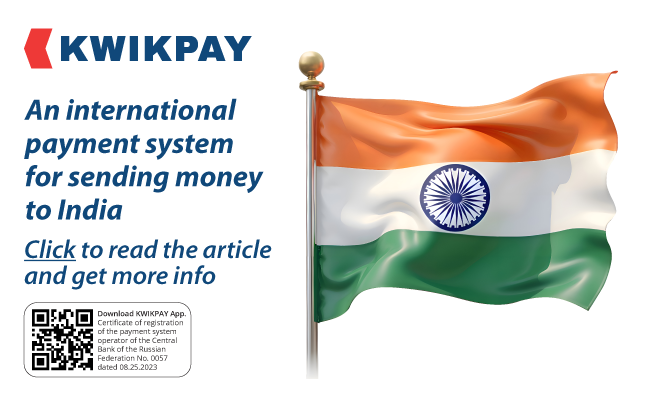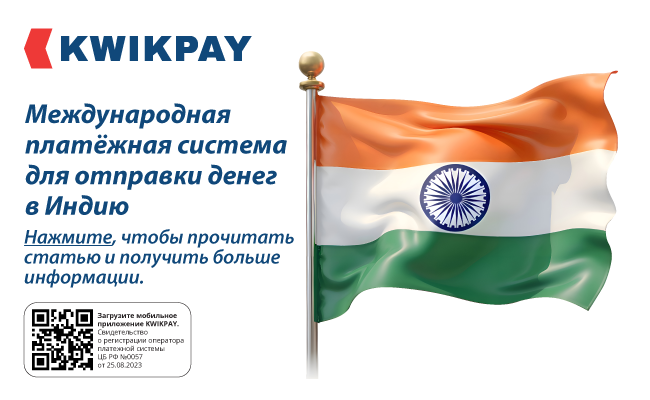






In the previous article, we examined the specific tasks and directions of Russian-Indian economic cooperation. Now, let us characterize the problematic aspects of this process, which, unfortunately, have a multifunctional nature.
The Russian Federation and the Republic of India are two sovereign participants in the international economic system, possessing significant combined potential in terms of macroeconomic growth, structural diversification, and exogenous influence on global trade and investment flows. In aggregate terms, the strategic perspective of Russian-Indian economic partnership is driven by a high degree of complementarity in resource, human, and institutional factors. Both economies demonstrate potential for expansion and structural transformation across a wide range of industries—from the traditional energy sector and capital-intensive infrastructure to high-tech segments of the digital economy, tourism, and services. Nevertheless, in the implementation of deeper cooperation scenarios, destructive factors of both exogenous and endogenous nature persist, hindering the full realization of bilateral interaction potential.
One such factor is the geographical distance between the two nations, which generates substantial logistical and transactional costs and complicates supply chain integration within transnational production and distribution systems. However, with the development of multi-format infrastructure and the introduction of high-tech solutions in logistics, particularly in the context of the "International North-South Transport Corridor" (INSTC) megaproject, there is a trend toward reducing the time and cost parameters of logistical operations. This, in perspective, could neutralize this limiting factor Karapetyan S. Z. Economic Cooperation Between the Russian Federation and India: Problems and Prospects / S.Z. Karapetyan. – Electronic text // Science Bulletin. – 2023. – No. 6 (63). – URL: https://cyberleninka.ru/... (accessed: 20.03.2025)..
Another restraining variable is the institutionally insufficient articulation of economic interaction opportunities, resulting in a significant portion of business entities on both sides remaining poorly informed about potential synergies. As a compensatory measure, it is proposed to intensify B2B communication mechanisms through targeted industry forums, international exhibitions, and platform events involving business associations and economic diplomacy bodies Kupriyanov, A. V. Russia and India: Problems and Prospects of Cooperation / A. V. Kupriyanov. – Direct text // Polis. Political Studies. - 2022. - No. 2 4. - Pp. 63-76..
The heterogeneity of economic structures is another factor dampening the dynamics of cooperation. The Russian economy, with its pronounced export-raw material orientation and high dependence on the fuel and energy sector, contrasts with the Indian model, which is dominated by the service sector, IT services, pharmaceuticals, and light industry. However, this structural asymmetry can be interpreted not as an obstacle but as a basis for complementary integration: in particular, leveraging Russia’s resource base and expertise in strategic industries (nuclear energy, defense technologies, heavy machinery) alongside India’s human capital, innovative environment, and domestic market could create sustainable growth points.
The energy component of cooperation remains a system-forming direction, encompassing both hydrocarbon diversification of India’s energy balance through oil and gas imports from Russia and deepening cooperation in the nuclear energy sector. Signed agreements on the construction of new nuclear power plants using Russian technologies lay the groundwork for institutionalizing technological interdependence and long-term interstate cooperation.
Alongside economic interaction, it is necessary to stimulate the development of humanitarian and cultural communication channels, particularly through expanding tourism exchange, harmonizing visa regimes, institutional support for cultural events, and promoting mutual historical and cultural narratives. The development of tourism as a multiplier sector could become an additional factor for sustainable growth, activating transportation, hospitality, leisure, and education sectors.
Despite positive trends, a number of institutional barriers persist—from high customs duties to opaque regulatory mechanisms and standards that limit trade and investment activity. Therefore, harmonizing trade regimes, increasing legal transparency, and optimizing cross-border procedures should remain priority areas.
To achieve a sustainable and strategically sound model of bilateral economic interaction between the Russian Federation and the Republic of India, further institutional strengthening of both political-diplomatic and macroeconomic cooperation channels is necessary. Building a systemic architecture of partnership should occur through regular, multi-level communication at high-level political and business platforms, including intergovernmental summits, economic forums, and targeted negotiation sessions where binding agreements can be developed to eliminate barriers and activate mutual commitments.
An integral part of this process is the formalization and institutionalization of relevant economic information exchange and benchmarking to reduce awareness asymmetry among economic actors. Expanding entrepreneurs' access to business interaction and project cooperation platforms should be accompanied by the creation of cross-country advisory mechanisms to support cross-border initiatives Burtovoy, M. Yu. International Scientific and Technical Cooperation Between Russia and India: Forms of Cooperation / M. Yu. Burtovoy. – Direct text // Symbol of Science: International Scientific Journal. - 2023. - No. 1-2. - Pp. 56-59..
Special attention should be paid to transforming the investment climate in both Russian and Indian jurisdictions by institutionally simplifying regulatory procedures, reducing administrative transaction costs, and increasing corporate transparency. Developing mechanisms to stimulate private and mixed investments, as well as introducing guarantee instruments and public-private partnerships (PPP) in cross-national projects, should be considered a priority task of bilateral macroeconomic policy Trade Cooperation Between Russia and India in Modern Conditions / S. V. Kubanova, A. V. Shereshov, E. E. Yusifov, R. R. Akhmedzyanov. – Direct text // Economics and Business: Theory and Practice. - 2022. - No. 10-2(92). - Pp. 30-33..
Concurrently, cultural-humanitarian exchanges and educational tracks of interstate interaction hold significant potential in fostering an environment of sustainable trust and long-term social ties, indirectly contributing to deeper economic relations. Continuing academic mobility, organizing multi-format cultural events, supporting language programs, and promoting cultural dialogue are tools that create prerequisites for a cross-cultural business environment and expanded interpersonal networks within the business community.
A key condition for ensuring the long-term sustainability of the partnership is the presence of political will at the highest levels of government, expressed through regular dialogue, alignment of foreign policy positions, and institutional consolidation of interests in multilateral formats. This is particularly relevant in the context of a multipolar global governance model, where mechanisms such as the Shanghai Cooperation Organization provide expanded platforms for political and economic consolidation of efforts.
Given persistent barriers such as fragmented regulatory frameworks, tariff restrictions, and institutional inertia, it is crucial to continue efforts to eliminate these constraints and build a favorable ecosystem for international trade and investment. Simultaneously, the task of developing physical infrastructure—particularly transport and logistical links covering maritime, railway, and air routes—must be prioritized to enhance operational efficiency in trade and reduce time lags.
Thus, the implementation of large-scale and systemic initiatives within Russian-Indian economic interaction requires a strategic approach encompassing not only economic tools but also an institutional rethinking of the nature of international cooperation amid global transformation. Comprehensive development of logistical architecture, alignment of standards, mutual investment openness, and institutional support for innovative sectors should form the basis for sustainable and balanced growth, ensuring mutually beneficial integration of both economies into the new paradigm of the global economic order.